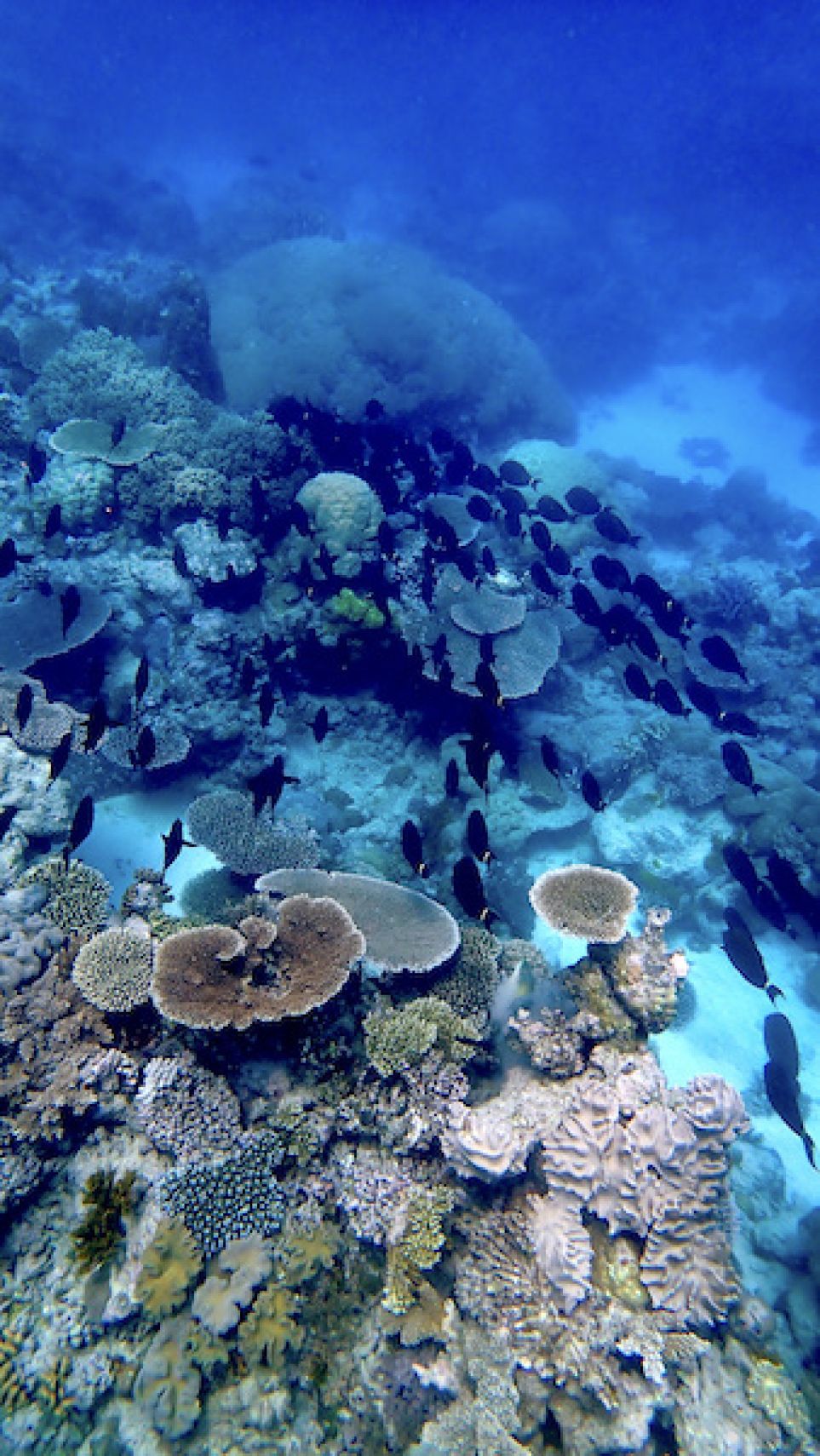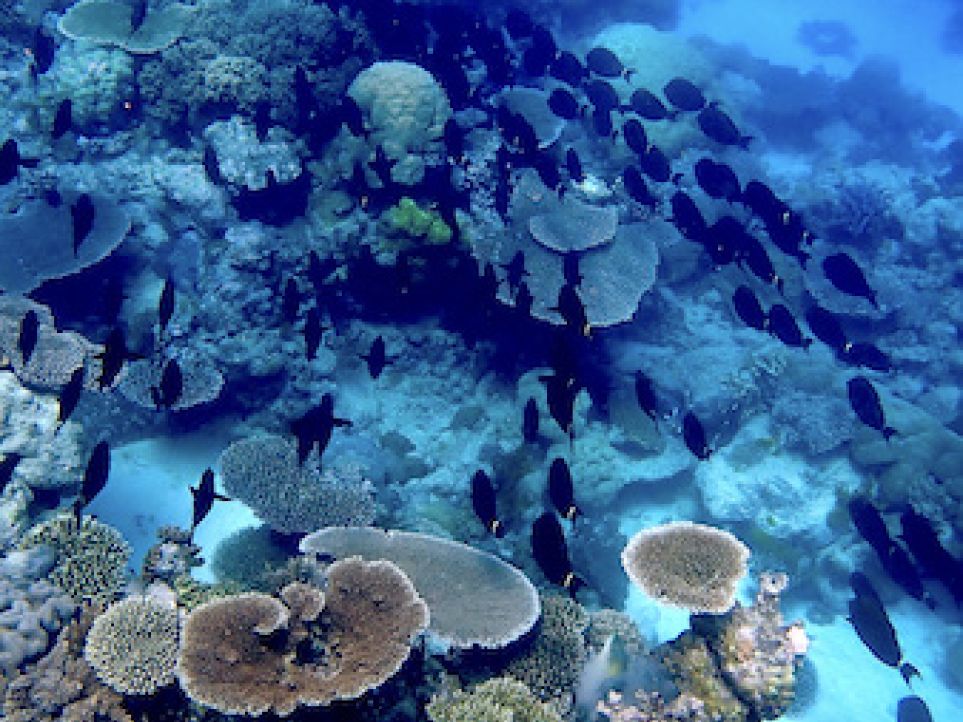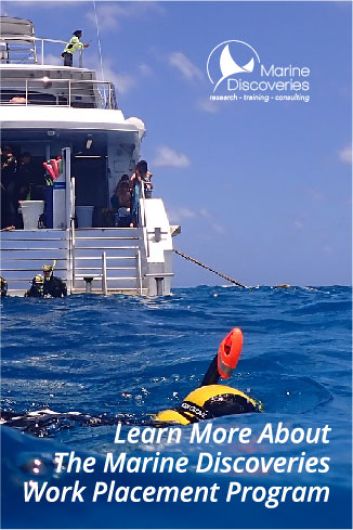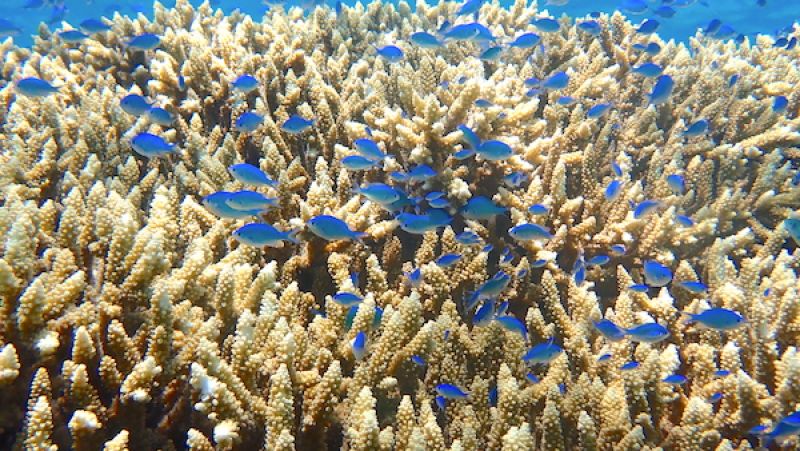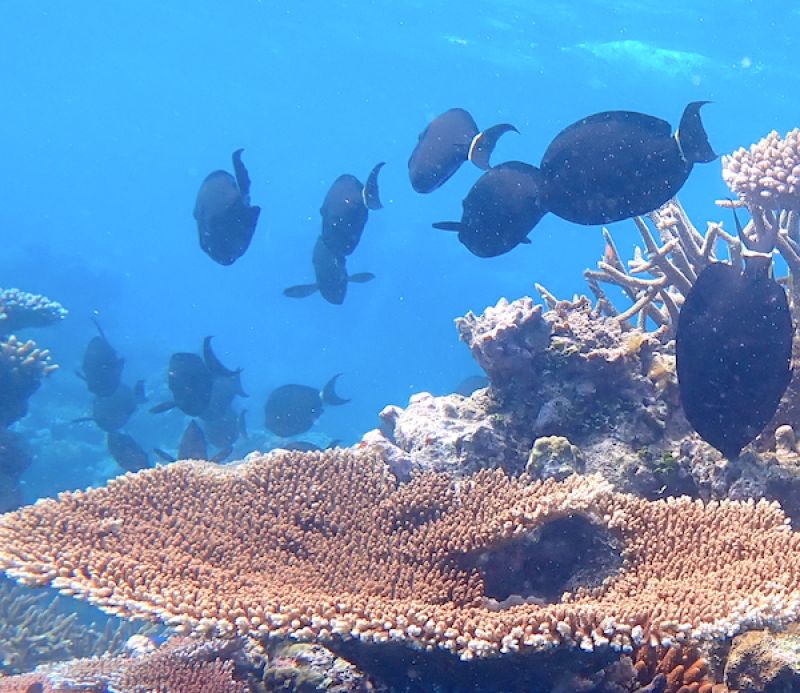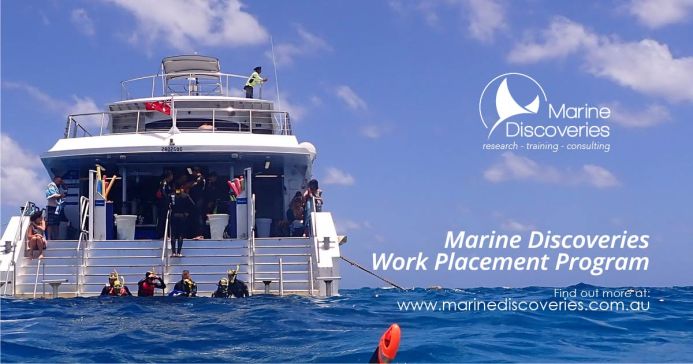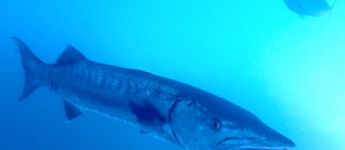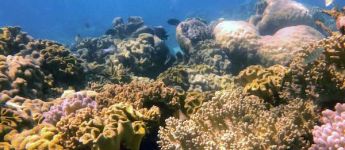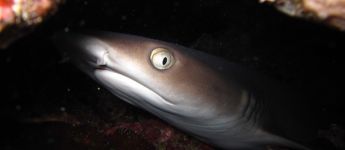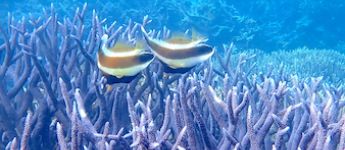Why do fish school?.
Imagine this. You are out for a snorkel or a dive on the beautiful Great Barrier Reef… Suddenly, you come round the corner and find yourself in the middle of a huge school of fish, all just floating in the middle of the water column. Pretty impressive right. But why are they doing this, and how are they not crashing into one another constantly?!
Firstly, let’s look at the two different words that are most often used to describe a group of fish, a school and a shoal. You may have heard both of these and wondered which one is the correct term? The answer is both, but it depends on what the fish are doing.
A shoal of fish is a simple social grouping of fish, imagine the fish just hanging around and not really doing much. But then, a predator comes along and suddenly that shoal becomes organised, groups together tightly, each mirroring each other’s movements to try and confuse and distract the predator. That shoal has now become a school. So, a school of fish is any group of fish that demonstrate complicated behaviours. Any group of fish is a shoal but not all shoals will become schools. Make sense? Sweet!
So, the big question is, once they become a school, how do they keep in such perfect formation, swimming so tightly together and still not crash into each other? The answer is all to do with something called a lateral line.
The lateral line is a system of organs that are found in fish. It often looks like a ridge, a flat line or even a faint line of pores that run down the side of the fish’s body and in some species like sharks, can be quite pronounced. It is used to detect movement, vibration and pressure gradients in the surrounding water and so can be used in schooling, hunting for prey and orientation.
It does this by using modified tissue cells that respond to motion and turn these signals into electrical impulses that the fish can then react to. In some species, these lateral lines have even evolved to act as electroreceptors as well!
So, back to schooling. The lateral line is used to work out where all the other fish in the tightly compacted school are and respond instantly to changes in direction, allowing them to keep the school together and hopefully confuse predators enough to not get eaten!
About the Author

Marine Discoveries

Marine Discoveries
Organisation

85 Lake Street Cairns,
Queensland. 4870
Australia
+61 (0)7 4031 7794
ABN: 93 643 207 845
Marine Discoveries acknowledges, recognises and respects the Elders, families and forebears of the the Bama Peoples – the Aboriginal rainforest people who are traditional custodians/owners of the lands that cover our region. We also acknowledge, recognise and respect other Aboriginal and Torres Strait Islander people who call our region and the Great Barrier Reef their home.
ABN : 93 643 207 845

